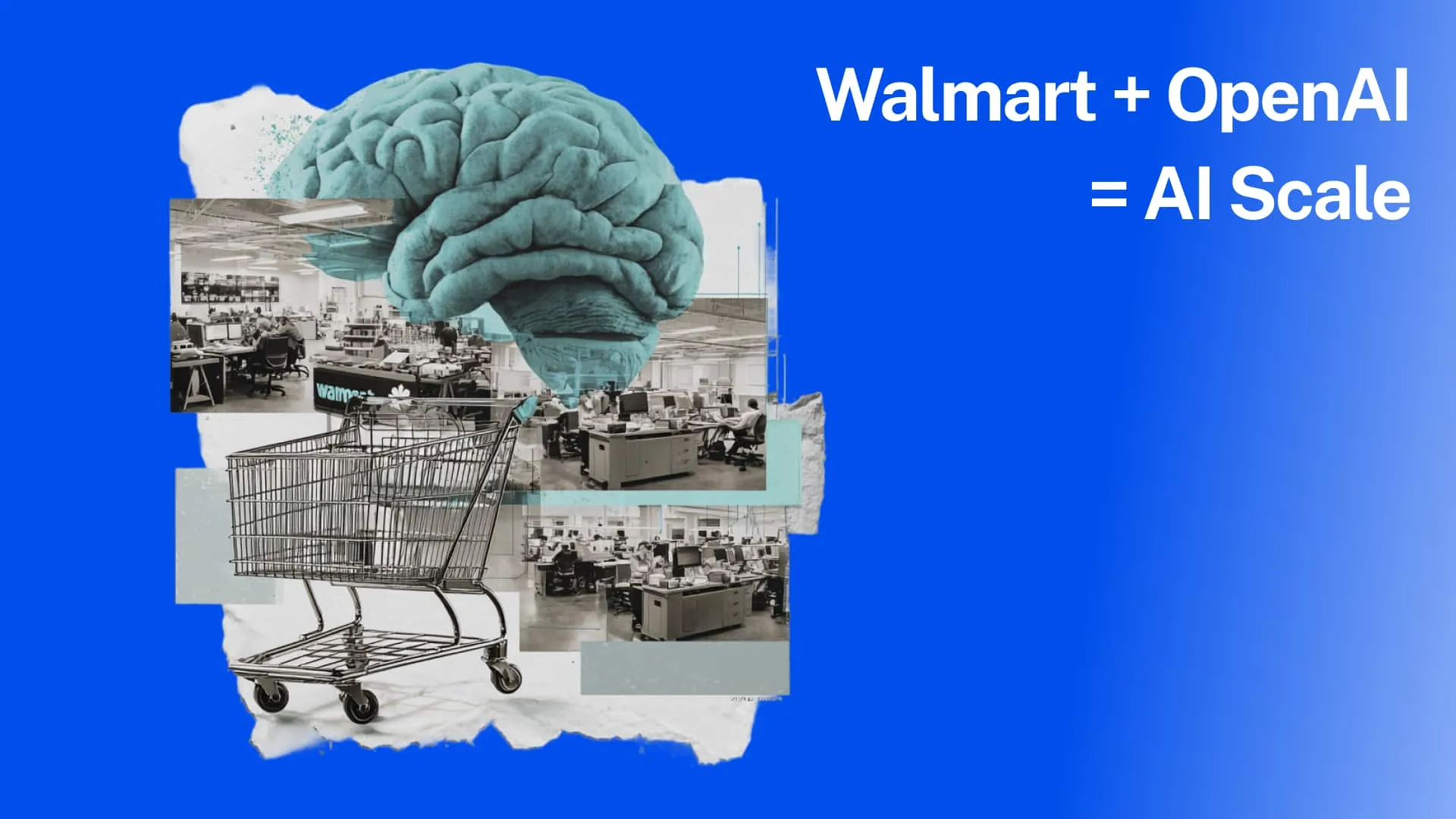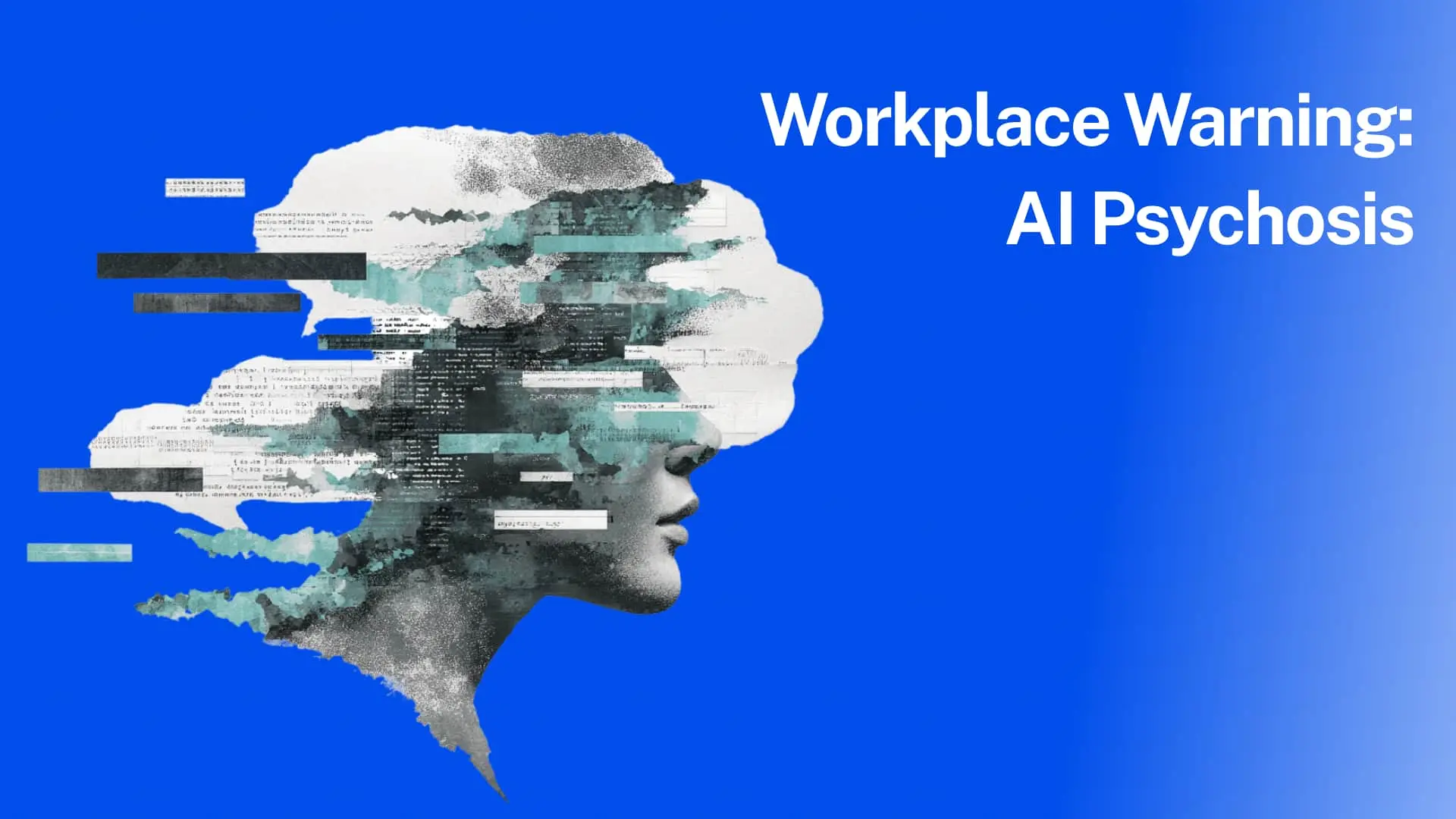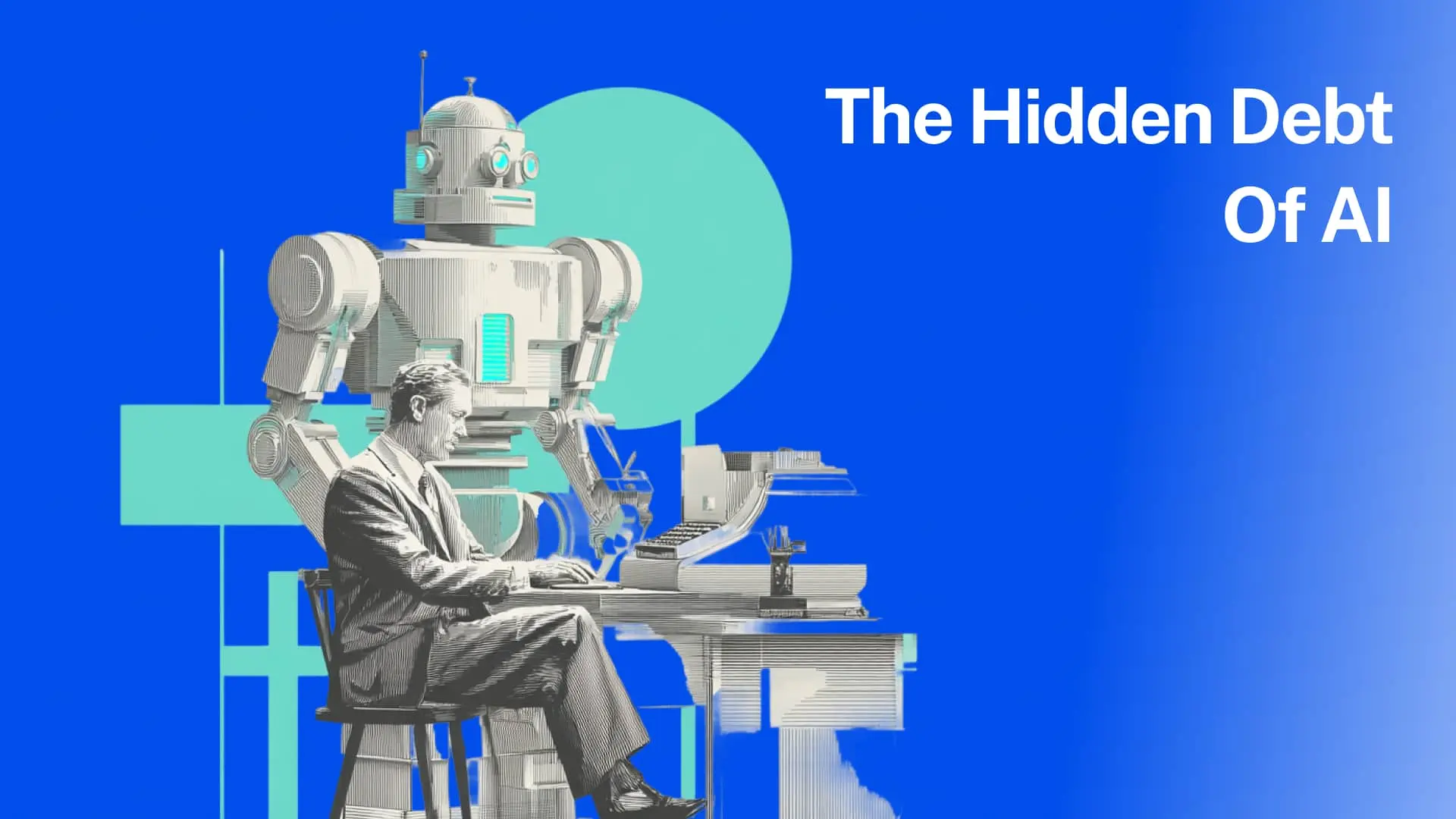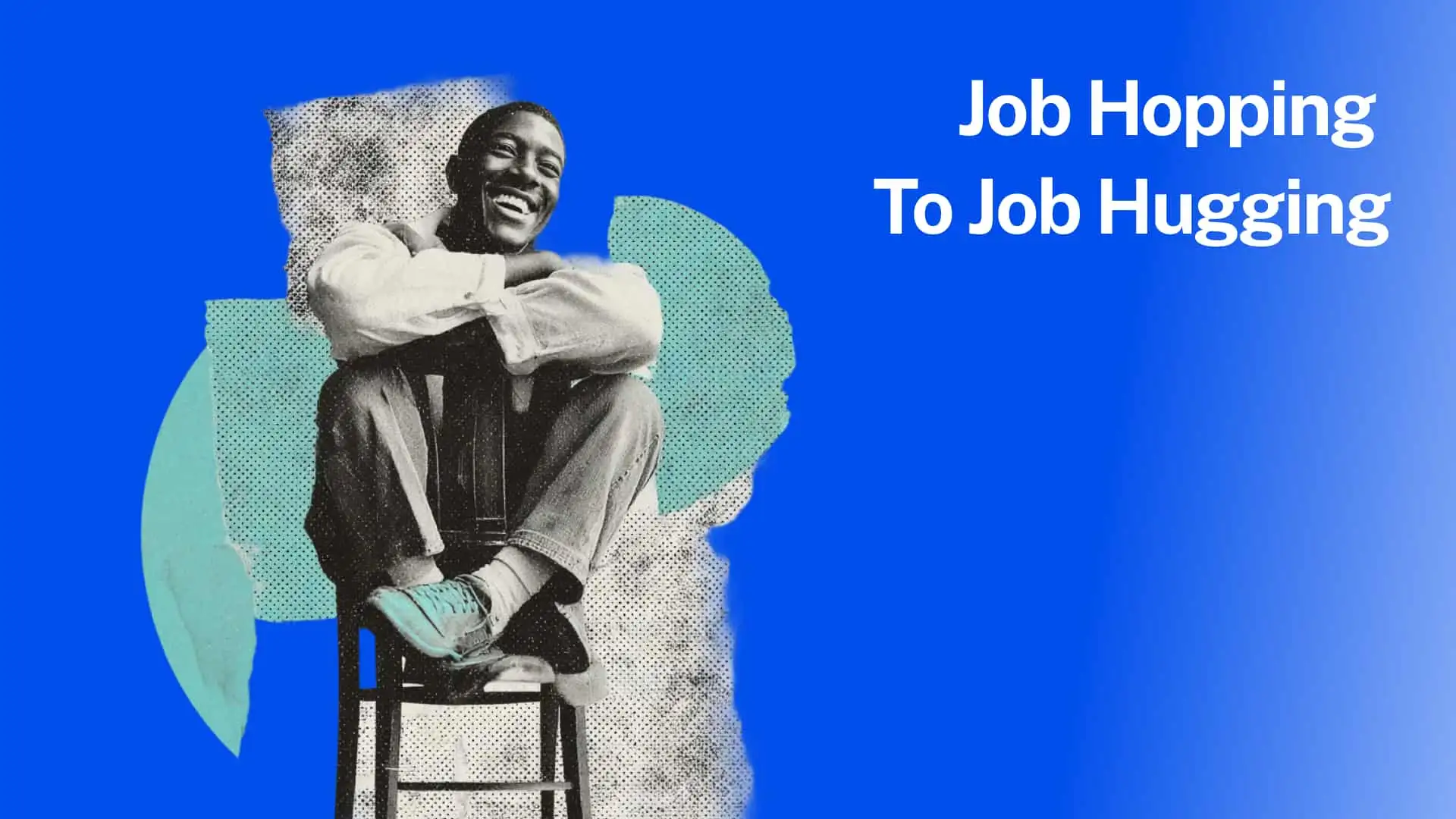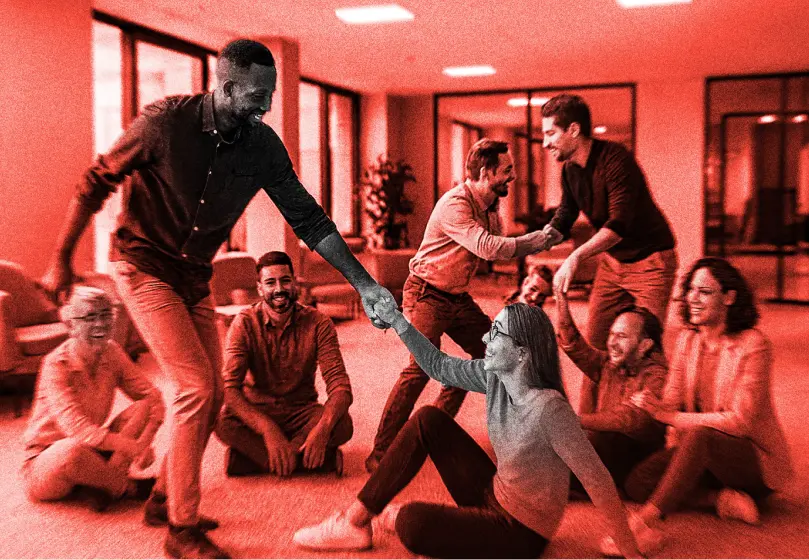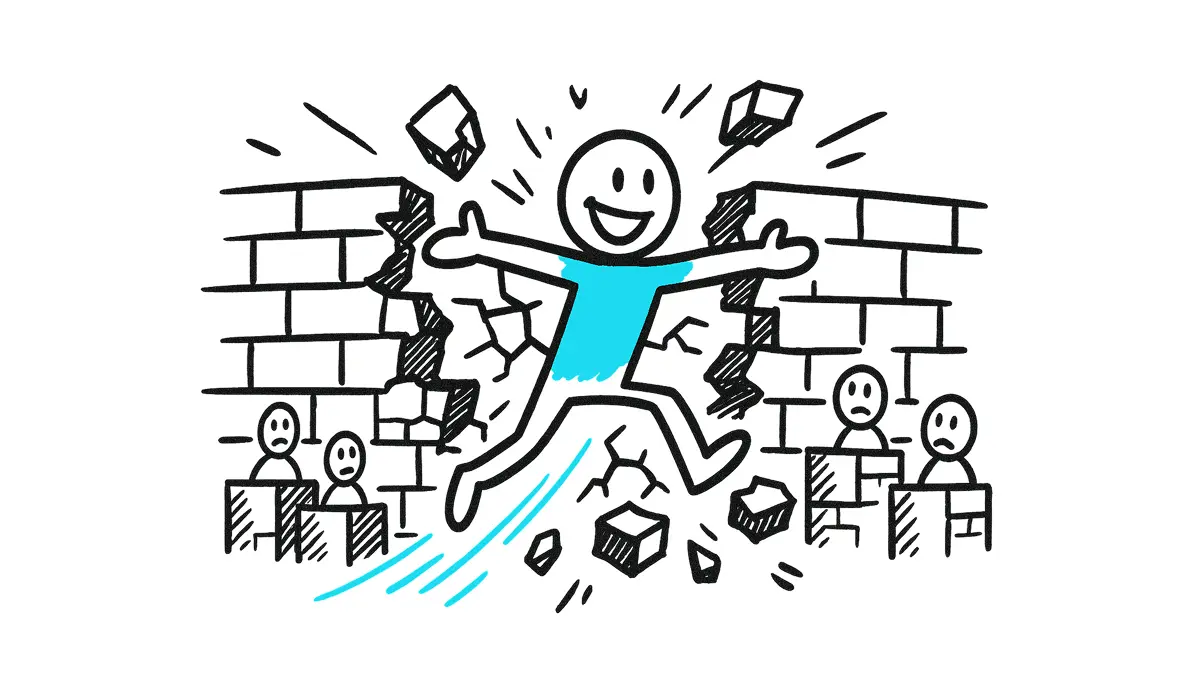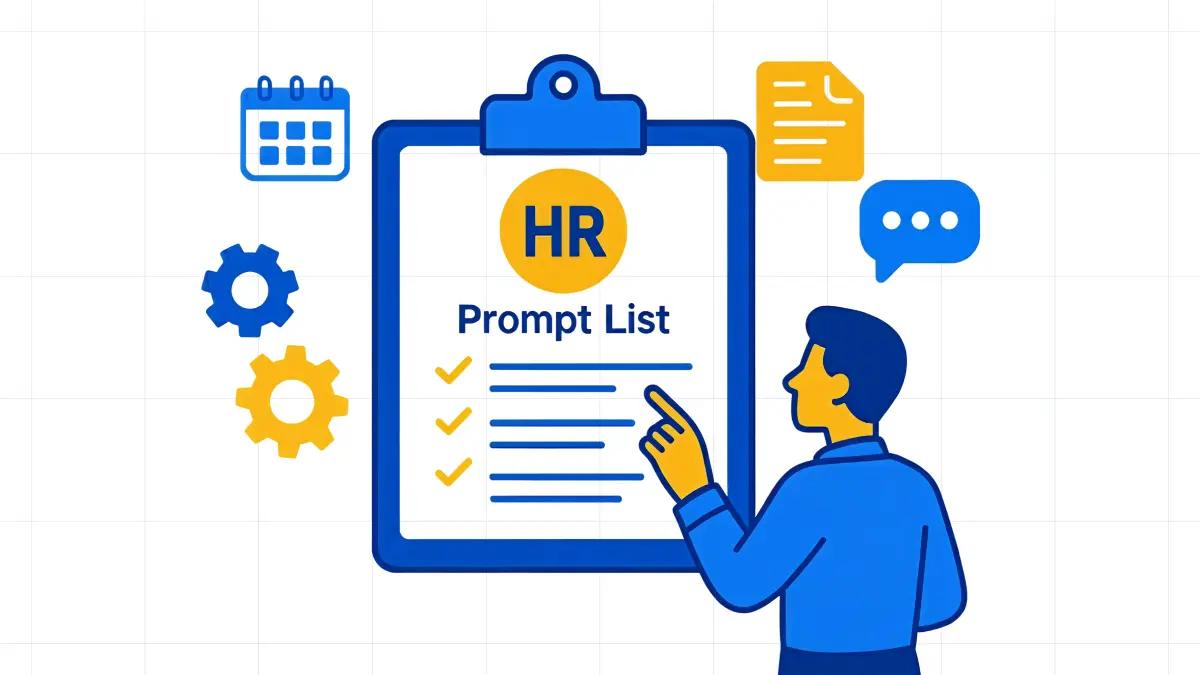🎧 Listen Now:
This week I’m speaking with Paul J. Zak, a neuroscientist and economics professor whose work focuses on human connection, human happiness, and effective teamwork.
Paul is a 5 time TED speaker, is in the top 0.3% of the most cited scientists, has given talks in 30 countries, and wrote the 2017 HBR classic “The Neuroscience of Trust.”
Paul shares insights from his extensive research on how trust influences productivity, innovation, and well-being in the workplace, providing a roadmap to foster a culture of trust and empowerment. All that, and the importance of embracing weirdness.
Here are a few takeaways to apply as a leader:
1. Embrace the Weirdness
Recognizing and celebrating the inherent weirdness in people creates a culture where everyone feels accepted and where trust is built more easily.
2. Trust is the Cornerstone of Modern Workplaces
Trust is even more critical for remote and hybrid teams. A zero-trust environment leads to micromanagement, which in turn stifles productivity and employee satisfaction. But – a high-trust workplace fosters innovation, productivity, and a sense of well-being among employees.
3. Trust AND Verify
Trust, coupled with verification, means employees have the autonomy to perform their tasks effectively while still being accountable for their outcomes. Plus, they’ll enjoy it more and stick around longer.
4. Keep Checking In
Effective communication and regular check-ins are vital in building and maintaining trust, especially in remote settings. Implementing daily huddles to discuss accomplishments, plans for the day, and any support needed can keep teams aligned and focused. Weekly deeper one-on-ones provide more personalized support and coaching opportunities, ensuring employees feel valued and understood.
5. Be vulnerable!
Leaders can leverage insights from neuroscience to enhance trust and team cohesion. For example, promoting a culture of vulnerability, which starts with you! It’s okay to not know everything, and it’s okay to share that. Your team will be better for it.
🔔 Available on:
Transcript:
Daan van Rossum: What is something that you want people to remember you for at the end of this interview?
Paul Zak: I understand that humans are weirdos, and that is because our brains are doing all this work unconsciously that we are not aware of. We are so varied in our behavior that we are not aware of how other people are. So that means that we need to accept everybody in their weirdness and celebrate all the weirdness of diversity because we are all weirdos. It is just not that big of a deal. We will have good days and bad days. Except everybody is the way they are.
Daan van Rossum: Trust and neuroscience—you have written and spoken a lot about trust in the workplace. I think it is a big topic for a lot of people who are currently leading teams, especially hybrid teams and remote teams, where you do not see your team members all that often.
What is the role of trust in today's workplace and how can people build it and maintain it?
Paul Zak: Let us ask the opposite question. What happens if we are in a zero-trust workplace? Then, I have to manage everybody in my, you know, direct reports, which means I can't do my job because I am managing everyone else's life.
If you are an employee whose boss is managing them to the nth degree, it is not fun for you because you are there because you have some skills and you want to express those skills, do a good job, and feel like you have control over your life. Micromanaging is a zero-trust world.
Now, let us flip it. In the high-trust world, and this is not trust without some verification, it is always trust and verification, so you have a much smoother process. In the micromanaging world, I have a lot of friction. You are constantly looking over my shoulder, doing all kinds of things.
But in the high-trust world, I am giving you the freedom to do your job; presumably, you are trained well, that you've been trained to do, and that you get satisfaction from doing. That means that the supervisor can do his or her job, can focus on strategy, can focus on bigger-picture ideas, and is not on the front lines all the time.
So what we find is that in these high-trust organizations, employees not only enjoy their jobs more, they are more productive, and they are more innovative. They take fewer sick days, and they are better citizens, better family members, and better partners outside of work because they are not getting beat up and being treated like children at work.
Again, trust and verify. I want to give people some freedom to do what they have been trained to do and make sure they have sufficient training to do that. But I also want to do lots of check-ins.
I am a believer in the daily huddle, and I love the daily huddle. Real quick, three questions. What did you do yesterday? What is your plan today? What do you need help with? That is all I need to know.
Then, every week, with a little deeper check-in on a one-on-one basis, the data handles everybody. Then, one-on-one, “Hey, what is going on? Oh, you are behind schedule on this. Make sure. How do I help you meet that milestone?”
The coaching approach, I think, is the high-trust approach. Again, I am not micromanaging you. I make sure that I am the problem solver. I am the person who can help you be successful.
Daan van Rossum: I love that idea of almost two opposite sides of the spectrum. One is being trusted, and one is being micromanaged. I feel like a lot of us have experienced that.
Do you think that it is hard for people to trust other people? I mean, it sounds like a very obvious question, but it is one of these themes that comes up a lot. Can I really trust people, especially when I do not see them? Can I trust them to do the work to be productive?
Is it hard for people to trust?
Paul Zak: That is the most profound and fundamental question. Why do we ever trust strangers? By identifying the brain signals that tell us that someone around us, a stranger in particular, is trustworthy, Then we can identify what promotes or inhibits that response.
A couple of examples. You were on an airplane last week. Did you check with a pilot?
Again, whatever airline you were flying on, we have institutions and a bunch of systems that help us gain trust in other people, even though we do not know them.
But at the same time, what we have shown neurologically is that as social creatures, we are so deeply attuned to very subtle social signals that our default is to trust people, and we can be taken advantage of by con men, for example, who play on that.
But generally, there's such a big benefit to trusting others. We can be friends. We can work together. I do not need to put a cop in every corner if people are trustworthy. If we think about your home country, the Netherlands, one of the great trading nations for going on a thousand years, Why? Very high levels of trust, right? They built the Asiatic League particularly to have a guarantee that when you trade with us, it is all going to work out.
And if things go south, we have some insurance in place, and we are going to make sure that we make you whole because we want to have that repeat business.
To me, in today's world, trust is driving up employee experience. So when I have control of my life, I feel better about my job. I am not being micromanaged. I feel like I can grow as a professional and as a person, and with time, I am reducing those frictions. I am more productive, and I provide better customer service. So now I am raising customer lifetime value because of the experience the customer has with an employee who's excited about being here as opposed to...
Maybe you haven't had this experience, Don, but I have worked in places where I had that micromanaging boss. He often yells. I do not like yelling. I am a grinder. I would work 15 hours a day. Do not yell at me because you are upset about something. I had nothing to do with it. I would just hit the clock and be like, dude, at 5:05, I am going home. I have to get another job.
So, I think there are so many benefits to having a high-trust organization, and we should lean into them. These are not soft skills. These are the hard skills. People are weirdos. Trusting humans means accepting that you are going to have good and bad days, but also being that coach, being that cheerleader, and giving you a chance to grow into this new situation.
Daan van Rossum: Amazing. Then you also mentioned this idea of neuroscience. You wrote this very famous, I think 2017, HBR article, Neuroscience and Trust. What is it that people should know about neuroscience? What are our brains telling us about how we should lead and how we should work?
Paul Zak: The signals that tell us whether we should trust another person are almost completely out of our conscious awareness. What that means is that we have to have either a measurement technology to measure that or think about the ways we can organize the humans at work so that we facilitate, again, trust, but verification.
Things like people autonomy—we talked about hybrid work. So for hybrid work, I want to do check-ins probably more than once a day, but not every hour. So, if you are doing fine, “Hey, it is three o'clock; do not just check it to see if everything is going well. Yep. Good to go.” That is all I need to know. Or, “Hey, you know what? I have a big problem. The server went down. Hey, I need your help right now.”
I need you to be reliable. Okay, everything I am doing else can wait, but if our customers can't use our software, we are kind of screwed. That is another trustworthy level. If I say I need you now, I need you now. Do not say, “Well, you know, it is quarter to 5, and my day is over at 5.” No, your day is not over for having a crisis. It is all hands-on deck.
You need those kinds of people, but it ultimately comes down to really giving people the opportunity to have the satisfaction of having challenges to grow and to be coached into having an amazing experience at work. That is a weird statement. Amazing experience.
First of all, this is work. This is labor. Is it supposed to be fun? No, it is not supposed to be fun. I want you on. I am talking to you. I am putting energy into it. So I call this state immersion. I am focused on this. I am putting a lot of energy into this conversation with you. But when I am done, I will have satisfaction, like that was a pretty good interview. So I want that at work. I want you to be there. I want to burn energy. I do not want you flipping around on your phone, looking at whatever. I want you to say, “Hey, we got stuff to do. We hit milestones. That is a leadership perspective.”
On the other hand, if I have trained you, you know your goals, and you are part of a team that depends on you, most people will then perform quite well, actually, if you give them that kind of trust.
Daan van Rossum: And is that where neuroscience comes in? What can we learn from that when we think about building that trust and also that theme of immersion?
Paul Zak: That is a good question. There are so many parts to that. Let me try to summarize and be useful.
The first is that it is not natural for humans, strangers, or ungenetically related people to be working together. With these social brains, we like to be together. To do that properly, I need to depend on my team, trust them, and know where I am going.
From a leadership perspective, yes, I want to have trust, but I also want to be clear on why. Why do we exist as an organization? Why are we doing this thing? Not just the what. The “what” is obvious. “Hey, we got a project. We got to finish for this client next Friday.” Okay. Great. Why?
This is an important client. We are going to develop a stronger relationship with this client. This is a very interesting project that helps us learn a lot of things we can use with other clients. So, that is really important to establishing trust. If it is just “what,” I am back in the micromanaging kind of world.
Then, I can do a lot of things that promote or inhibit trust from a neurologic perspective. For example, one of the factors that radically inhibits the neurochemical that signals that someone is trustworthy is testosterone. So what does that mean?
If I create a very conflictual, internally competitive environment, like the old Jack Welch rank and yank, that means I have in-group conflict, and all that does is say, “Screw you; I am going to keep this job and you are not; I make sure you get fired.” Because that is really bad.
Now that L group competition, competition with my competitors, means we come together as a team, we are going to fight to keep our jobs, to grow, and to get those bonuses. That is all good, but I do not want to have an in-group competition, nor do I want to signal that there is a strong hierarchy. So, we see that high-trust organizations tend to have flat management structures.
So if I walk into my new business or whatever and I am wearing a $5,000 suit and everybody else has a T-shirt and jeans, that is a kind of “F you” kind of approach. Which is like, I am the goddamn boss. Do what I say, as opposed to, if we are all, I do not know, doing software development, wearing a hoodie and jeans, I do not care.
Here's a super useful trick for leaders to show vulnerability. So it turns out that people, like you, Don, who are too beautiful, too perfect, and too smart—we kind of hate those people a little bit. So there are really strong findings in psychology: if you are competent but you show vulnerability, people want to work harder for you.
So I say, “Hey Don, you know, we got this new project on machine learning. I understand a little bit, but that is really your gig. I would love to have you take charge of this project, and then please tell me what you are doing so I can learn more.” Now I can say that in a team meeting, even if I am your boss.
First of all, if I am your boss, I am not a machine learning expert. If you are right, because you are an expert, So, I am endowing you with that trust, with that ability, with that respect, even to do your thing but then be with a team. What I am going to do is make sure the client knows that we are developing this new software, blah, blah, blah. I am just making all this up now.
That is the sense in which I want to empower individuals to be valuable, as opposed to you having to do this thing, and here's my plea forever. Sorry, you opened a really big door, and I am taking the whole space. There are no more babies. Have you realized the whole world is aging except for Africa, and they will start aging in the next 10 or 12 years? So for Europe, the U.S., and much of Asia, the population is getting older, which means the number of people working is getting smaller.
We have to keep the people who are working engaged, excited, physically healthy, and emotionally fit. We can lead in and talk about emotional fitness later.
Again, if I am beating you up at work and you are like, “Screw this, I am done.” I am going to go on vacation, or I am going to take some other low-stress job. I am medicine-adjacent. I work a lot in psychiatry research, and I know, on two hands, doctors that went through the COVID thing, whether they are anesthesiologists, nephrologists, or whatever. And then there has been ICU care; that is not their specialty. They were all hands-on deck for all the COVID stuff.
Guys who were 52, 53, or 54, they're like, “You know what? I got 25 years of medicine. I have money in the bank. I am done. I am retiring. I am going to go play golf.”
That is a typical employee you have to worry about, which is a person who's in industry. They are in their early 50s and are like, I am good. I am going to walk away. You have no more employees.
Daan van Rossum: That seems to be one of the big shifting themes, like, okay, now we actually have to try and create a great experience for those employees, because we not only want to attract the best people, hopefully trustworthy people, but we also want to get the best out of them, and we want to keep them because the moment that you lose good people, I just recorded with Debbie Lovich from the Boston Consulting Group; she called it, "When you lose a 20-year bottle of Scotch, you cannot just quickly recreate that.”
When you lose those really great people who understand your company and how to create a good product, you lose a lot more than just one person. You use all that knowledge.
Therefore, does trust become even more important because trust also builds over time?
Paul Zak: It does build over time. Easily broken. But again, we default to it. I think from a leadership perspective, you really need to be on the front lines at least once a month.
Jim Sinegal started Costco, a big warehouse store. He just retired, but he would go to work every day. He would go into the stores where that short-sleeve white shirt had a name tag that said Jim on it, and he would be out there, moving boxes and talking to customers. He knew his business, he became a billionaire, and he never took more than $100,000 in salary.
It is like equity. Let us put that money back into the business. Let us pay the employees well, which they do. So, if you look at the turnover at Costco versus their closest competitor, which is the Walmart store, Sam's Club, Costco is about 40% premium. Employee turnover is much lower. Prices are a little bit higher than Sam's Club, but not a lot, but they're getting all this benefit of creating a great workplace.
I haven't seen the breakdown by profit margins, but I am just guessing margins are higher at Costco than Sam's Club.
Daan van Rossum: They do well. And of course, the customer also feels that. Because if you go to your favorite store and you are greeted by people who are happy to be there and who know you because you've been shopping there for a few years and they have been there for a few years, that is a very different experience, and that is where you see that link between the CX and the EX, the customer experience and the employee experience. That is probably why that is so important.
Paul Zak: And also use technology. I mean, in my immersion, I talk about going to the Four Seasons in Sydney and going there twice a week and going a couple of days, going somewhere else, coming back, and when I came back, the doorman, as I got the taxi, greeted me. “Oh, hello, Dr. Zach. Welcome back. Your room is ready. Here is the key.” Oh my God! Like I have been traveling all day. I am tired. I am feeling the love from the Four Seasons. So, now that we know where to stay—the Marriott or the Four Seasons—put me in the Four Seasons because it is going to be great.
Now that is a technology issue. It is also training, but there is technology. They know who is coming in. They know what they are looking for. They look at the tag on my luggage. So, there is a whole system there.
In terms of customization at scale, technology can help us do that. A really good CRM is software that should remind you all the time of what you are doing and how to make that experience great for the customer. Even if you did not personally see the customer before, if they are a customer, they should know you.
Daan van Rossum: Absolutely. It is the same for employees. What is better than getting recognized by, for example, your boss, remembering that it is a certain milestone, a certain amount of years that you have been working there, or it is your birthday, or maybe even your kid's birthdays? For all of those things, it is easier than ever for us to track them and use that data to really build trust with the employee, but we often do not do it.
You just mentioned the word love, and I remember that you have also been talking a lot about oxytocin recently.
Can you maybe share a little bit about oxytocin and the role that that plays in the workplace?
Paul Zak: Sure. Oxytocin is a neurochemical, one of the roughly 200 that are active in the brain, that seems to be this core signal that tells us that someone around us is safe or trustworthy, and it motivates us to interact with them.
We have shown that there is an interplay between oxytocin and another neurochemical, dopamine. Dopamine is to say goal direction. I want to get something. I want to do this something with some kind of motivation. This feedback between these two creates the way that the brain values social or emotional experiences.
Everything, from watching a movie to working, is more immersive and valuable to the brain. So once we have this measure of immersion, which we can get by applying algorithms, like smartwatches, then we can actually ask objectively and passively, “Hey, how is the employee experience?” or How is the customer experience? or What does this add to produce sales? and some others ers do by tapping into these old unconscious, evolutionarily old parts of the brain so that we can improve experiences at all those different levels we just talked about. Again, this is 20 years of my academic life identifying how the brain values these social and emotional experiences.
Going back to love, if I love in the affiliate sense, if I love my employees, if I care about the people I work with, I am going to put more goddamn effort in. Let's be honest about that. If I am in, we are all doing this thing, and I am working hard. We are all in this together. Again, this is a moderate level of stress. We have milestones to hit. We are kind of working together. That is exciting.
So again, the relationship between oxytocin and immersion More broadly, this valuation mechanism of the brain tells us that when I have deeply immersive experiences, they are deeply satisfying. So it is not that I want you to be happy at work; I do not! Happiness is this acute state like, “Oh, I got a free taco.” Or whatever. I could care less. What I want you to do is, at the end of the day, be tired and go, holy crap. We did something important today. Me and the other people I work with, like, we had this hard project we kicked off today. I feel good about that; it is highly immersive. Happiness is a cute spike that goes away very quickly.
Fine! I mean, that is, that needs to be happy, but having that long-term kind of thriving or flourishing is what the immersion is, and that is driven by the oxytocin and dopamine release that says this is important to you.
Daan van Rossum: And I think most people probably only know oxytocin from a mom's hug or something like that.
How do we replicate that in the workplace, and especially as you and I right now sit in different parts of the world talking online, is that something that can actually happen even when we are connecting, and maybe the role of immersion within that?
Paul Zak: Yes. Right. So we found that immersion online is between 50% and 50% of the immersion you have in person. So in person, as you said, we have touch, I have smell, I am a bitter eye contact, and so all that is expressing emotion is saying, “Hey, you are important. You are valuable.” You talked about recognition earlier. It is so easy to recognize someone. Now, the neuroscience says that the impact on the behavior will be greater if the recognition is for, “Hey Don, that project you did last week kicked butt. Our client was thrilled. You got it in on time. This is amazing.”
That is the kind of thing that is really important. If I do that publicly, now I have set aspirations for the whole team. “Oh, yeah, Don's kicking butt.” That is amazing. And everyone else says, “Well, I like to be recognized.” We all want to be recognized.
Again, the neuroscience is building in these expectations on how to build these teams that want to continue to perform at their highest level.
So recognition is important. Having that chit-chat time is nice. What we miss on this because we scheduled it, although we chit chatted before we started recording, is the random collision where we talk about movies, girls, boys, or whatever people talk about, and then “Oh, yeah, you are working on that big project. What is that project you are working on?”
It is not a work-life balance. It really is integration. We are integrating all of this. So if you love what you do, you talk about it all the time. “Look, it is late night for me, or moderately late night for me. Why am I talking to you?” I love what I do, man. It is so awesome that you are excited about what I am excited about. That is really thrilling for me. How nice is that?
So do I have to stop talking about work because it is after 5 p.m.? Hell no. Not the way I work. Not the way you work.
Daan van Rossum: Definitely not in this case. Exactly. And then, what are some things that people can do practically? Again, I love that word “immersion” because I think, especially when you are working online, it is just so difficult to really get that energy going and to make people feel like they're immersed in your world as a manager, as a leader, because of your excitement about the work. What are some things that people can do to immerse people more? I think that is really the question.
Paul Zak: Just for listeners, I am using immersion in a technical sense. This is a neurologic data stream that we can capture using big machines and smartwatches. So I have a very precise way to capture, second by second, how valuable or how much immersion the experience creates. So that means I can. tune my behavior, perhaps as a leader, to be better at that.
Number one, build in time, even if you have remote teams to physically see them.
Again, I would say once a month, if possible. That could be the leader going to different sites, or it could be that we bring everyone together for one or two days in mass. It is really important to build that social relationship.
The second is to do the thing that we naturally do, which is share our personal lives.
Even if you can't have an in-person happy hour, you could have a once-a-month Zoom happy hour. Just talk about it again, whatever you are talking about, because as we build that connection, that friendship, that attachment to each other, “Well, now, I trust you more.” Know more about your life. I know you are not a serial killer, probably, but I get more of a sense of who you are.
Lastly, from a leadership perspective, do not avoid the emotional information that people are giving out in your direct reports.
If you see someone who is happy or sad, you can open up that doorway without being bothersome and say, “Hey Don, gosh, you look tired today. Are you all right?” And maybe you say, “Oh, you know what? My kid has the flu. I have been up all night.” And if I were a smart leader, I would say, because there's no more babies, there's no more you, I would say, “Hey, do you need to be here? Can you just check in with your team and go home? Get some rest.”
I would rather have you go home and rest and come back on target tomorrow, then have presentism. So to me, that is smart management.
Great example. I have a woman who's worked with me for 15 years, St. Beth. She was my PhD student. Now she works for my company. One day she walked into my lab in the morning, and she was like walking on air. And I said, What happened with you? I always want my graduate students to fall in love and make babies because we agreed there'd be no more babies.
So I am like, Did you fall in love? Like, what happened to you? And, again, this is someone I know really well. And she said, “You know what? I started running three months ago. I have lost 15 pounds. I am doing my first 10K in a couple of weeks, and I just feel like a million dollars. And I can't believe you noticed.”
Again, totally appropriate, which is a nice thing to say. And she has said subsequently many times how much it meant to me that you just noticed that I was happy. It is not that hard.
Daan van Rossum: It is not that hard, but people have to somehow create space for themselves to notice because we may also be so busy with our own work and with our own lives and kind of fail to see that the other people are people. And they are going through things.
Paul Zak: For sure. They're not human capital. That is a terrible term. They're human beings. So I am in the Peter Drucker world. Management is a social science. So let's use all the social skills. And if we do not have those social skills, get some coaching and learn to get better at them.
By the way, I am not the best ever. I am not saying I am. I have just studied the neuroscience of social interactions for 25 years. So I have just gleaned some tips that I may have put in books like that one.
These are human beings. Again, they'll have good days and bad days. Try to be there, try to support them, and give them space to grow, but also those challenges. People also get bored at work. I am doing the same thing over and over.
For my team, I often move a junior who's kind of ready; maybe they do not know it, like, “Hey, you know what? We have this new project. It is only a one-month project. I think you should lead that project. And we will put a team around you, and those team members might be more senior than you, but they can help you, but you lead that project and get used to it; learn how to be a project leader.”
And they're like, “Really, am I ready?” “Yeah. Yeah. And we are all here for you. We are all going to be there. If you get stuck, you just talk to us and make some mistakes, and that is okay. That is a good school. That is how we learn.”
Daan van Rossum: I think a lot of what you are saying, Paul, is really about people wanting to be challenged; maybe we focus too much on the fact that we need to engage people. We need to make people happy, but really what drives real and deep happiness, to your point about flourishing, is that you feel challenged and you create accomplishments at work. That is what you are really giving your team—the opportunity to kick ass to beat the challenge and achieve something real.
Paul Zak: Yeah. So, doing hard but doable challenges is very satisfying when you reach them. So, I do not want to push you so far that you have chronic stress and are up all night. That is not good for anybody. People are going to quit and perform poorly, but they also do not want you to be stressed where you are. I have been doing the same forever, and I could give a crap about it.
So again, it is a difficult leadership challenge to know when I should push employees or push those around me to go a little further than they want. It is kind of a coaching model, or I call it a cheerleader model, like, “Hey, you can do this. You may not think you are ready, but I think you are. And I have seen a lot of people give this a shot, and it is going to be a little frustrating at first, and that is okay.”
I saw my graduate students. I have a big lab with PhD students. And I said, by the time you finish your PhD dissertation, you are going to kind of hate me because I am going to push you to be as good as I think you can be. I am going to push this research hard. It is okay that you hate me because my job is to be honest and try to get as much of you as possible so that you launch your career strongly.
If I just say, Do whatever, I do not care. I am not a good supervisor. I am not a good leader.
Same thing with employees. I want to continue to push them, recognize them when they achieve great things or even good things, and also think about how to help them grow. And that means I need to know a lot about them, but also personally.
I had the same secretary for, like, 25 years. She was fabulous, and I would review her once a year and talk to her, and I was like, “Are you bored? Do you want to move somewhere else?” And she said, “You know what? I have grandkids. I am done at 5:00 p.m. I have no stress.”
And she was perfect at her job. I mean, perfect. I loved her. And all she needed was Monday morning for me to sit down for 10 minutes and ask me about her weekend.
How was your weekend? And she would talk about this and that, and honestly, I really didn't care, but I cared about her, and it was important to her, so she was good for the week, and she'd care about everything when she finally retired. I was just heartbroken because she was such a wonderful employee.
So it is fine that she didn't want to progress on that. She had a rich life outside of work, and that is totally fine. Not everyone wants to have new challenges. But particularly for young people, if you look at surveys of what keeps people at their present employer, it is a chance for professional growth. It is this reasonable work-life integration where I can still travel and have weekends off normally. I am on and on and on.
But I think people still need to be pushed. We are still coaching people who are younger, in particular, to be successful.
Daan van Rossum: Absolutely. I mean, we could definitely talk for hours more, but we are almost at the end of our time. So I wanted to leave with one big last question, which is really around the future of work.
What have you learned over those many decades of studying people that you wish you could see more of in the future?
Paul Zak: I will close the narrative arc I started with, which is that I think we need to focus on emotional fitness. And so that is a term I am promoting, just like physical fitness. You can exercise and get stronger. You can build up your emotional fitness by having a chance to try new things, to fail, to get them again, and to build up the strength to take the hits we have at work and at home, for that matter.
And so we created free software called Tuesday and found the app store that actually measures and gamifies, building up emotional fitness, telling you to get enough social and emotional experience to have that strength, have that support group around you, and be used to corporate wellness programs and health insurers.
And if we are running out of humans, you guys may disagree about how soon that is going to happen, but I think we are going to eventually run out of humans, or at least it is going to start shrinking the world. We have got to really think about not only physical fitness but keeping people emotionally healthy.
We look at the real explosion of mental health disorders in the world. That is not only diminishing people's health and satisfaction with life but also causing things like suicide, just terrible things. Having something that guides us to be emotionally healthy, I think, is the thing that I am most passionate about.
So in the next 10 years of my life, Don, all I want to do is further develop these technologies so that people can really live longer, happier, and healthier lives.
Daan van Rossum: Amazing. What a perfect note to end on! Thanks so much, Paul, for being on.
Paul Zak: What a pleasure! Thank you.










